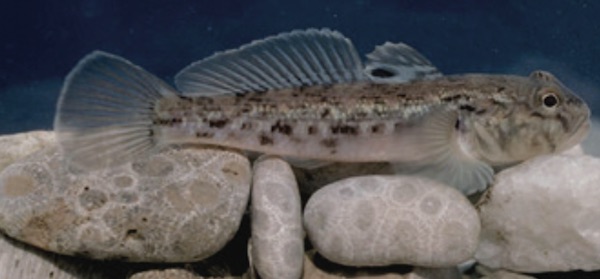DEC, Canal Corp. target spread of round goby

Photo from DEC of round goby which range in size from 4 to 10 inches.
Press Release, DEC and Canal Corp.
The New York State Department of Environmental Conservation and the New York State Canal Corporation have announced a new comprehensive effort, including a new rapid response plan, to combat the potential spread of the round goby, an aquatic invasive species, to the Lake Champlain Basin following the discovery of the fish in the Hudson River near Troy in July 2021. Aquatic invasive species can out-compete native fish species, disrupting ecosystems and damaging local economies dependent on recreation.
Aquatic invasive species are non-native aquatic plants and animals that can negatively impact the environment, local economies, and even human health. These harmful species have been found in many of New York’s lakes, ponds, and rivers, and can be transported from waterbody to waterbody on watercraft, equipment, and bait. Research shows that recreational watercraft are the greatest vector for transport and introduction of these invasive species throughout the United States.
“DEC is working shoulder-to-shoulder with our partners at Canal Corporation to address the threat of round goby and other invasive species to waterbodies like Lake Champlain,” said DEC Commissioner Basil Seggos. “We are bolstering current invasive species surveillance education and taking a hard look at the immediate threats posed by these water-borne invaders to implement the most effective strategies that will protect our fisheries, wildlife, and local recreational economies today and into the future.”
The round goby is one of the biggest threats to New York waters, particularly Lake Champlain, and DEC lists round goby as a prohibited invasive species in the New York Code of Rules and Regulations. Native to Europe and Asia, this fish was introduced in the Great Lakes in 1990, and spread throughout the lakes’ system. Round goby reproduces quickly, outcompetes native benthic fish species for food and habitat, eats the young and eggs of other fish, and can transport botulism up the food chain to waterfowl.
“The Canal Corporation is proactively partnering with DEC to ensure the Canal system helps implement any necessary steps, including education and awareness programming, to combat against invasive fish, like the round goby, and other aquatic invasive species, while at the same time ensuring the Canal remains a driver of economic activity and a thriving tourist destination,” said Canal Corporation Director Brian U. Stratton. “As we implement risk reduction strategies along on the Champlain Canal this season, we ask users and stakeholders for their patience and encourage them to learn how they can assist in mitigating the spread of aquatic invasive species to ensure the Canal’s resiliency for generations to come.”
DEC and Canals will conduct a full evaluation of the potential ecological and economic impacts of aquatic invasive species, including the round goby, to the public, canal users, municipalities, and New York State. Working with partners, the agencies will develop a rapid response plan to take effect before the opening of the Canal system on May 20 to identify appropriate actions if round goby enter the Champlain Canal. These measures and metrics will be driven by research tracking the spread of aquatic invasive species.
In addition to the rapid response plan, the agencies are working collaboratively with partners, like the Lake Champlain Basin Program and others, to the associated economic impacts, implement new risk reduction strategies and potential mitigation measures in select locks on the Champlain Canal, and provide enhanced public education so all New Yorkers can help prevent the spread of invasives. Prior to advancing any actions, DEC and the Canal Corporation will work with partners to educate and engage stakeholders on any measures identified to limit the spread of round goby.





































































